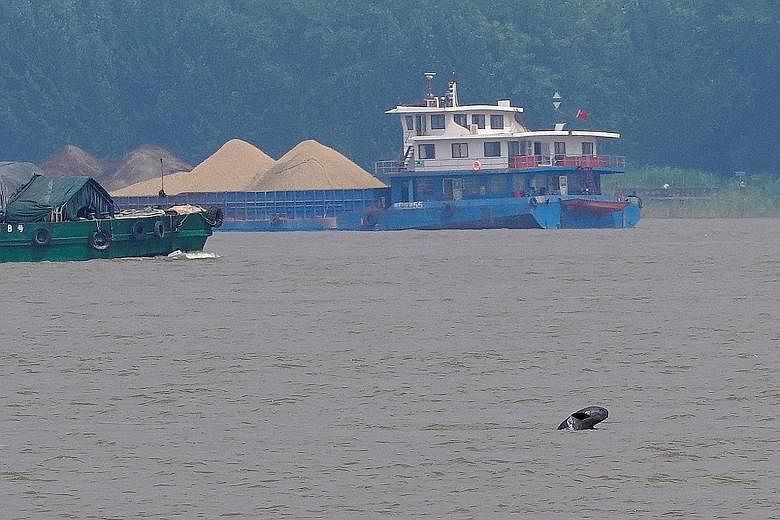NANJING • On a short stretch of the Yangtze river, three sleek grey porpoises twist in muddy waters near the city of Nanjing, protected from passing barges and ships by a row of yellow buoys.
With only 1,000 remaining, the Yangtze finless porpoise is a symbol of the damage done to China's longest river in a decades-long campaign to tame floods, reclaim farmland and industrialise the regions along its banks.
Chinese President Xi Jinping's call for sustainable growth in the Yangtze "economic belt" has raised hopes that the river's last surviving mammal can become an emblem of China's environmental revival.
"It has now been scientifically proven that the Yangtze porpoise is a unique species," said Mr Jiang Meng, secretary general of the Nanjing Yangtze Finless Porpoise Conservation Association, a group that oversees the porpoise safe haven in Nanjing.
The safe zone is tucked behind an "ecological red line" that bans construction on 88 sq km of territory along the shore. Rows of fish farms have been replaced by lotus ponds teeming with migratory birds. Fishing is restricted and ships are routed away from the zone, which is patrolled daily.
China counted 1,012 Yangtze finless porpoises in its last census in 2017, down from 2,500 in 1991, and the numbers are falling by about 10 per cent a year, officials said.
The porpoise can still be saved, Mr Jiang said. "The numbers are still falling but the rate of decline is slowing."
It has been done before, activists say. A decades-long conservation effort saved the giant panda, China's national symbol, from the brink of extinction. There are around 1,900 giant pandas today, and their numbers are rising.
Many porpoises are killed in collisions with boats because noise pollution affects their echolocation, while a degraded habitat and polluted water expose them to contagious diseases.
A 10-year government action plan released in 2016 blamed "intensified human activities" for the drop in porpoise numbers. Past protection efforts failed to arrest the decline.
Researchers have had some success in breeding porpoises artificially, but the numbers are small. China may be forced to preserve the species by storing reproductive cells and repopulating the river when conditions improve.
REUTERS

